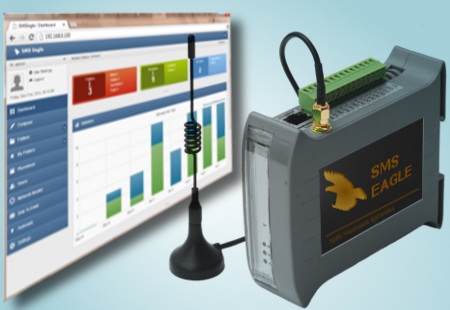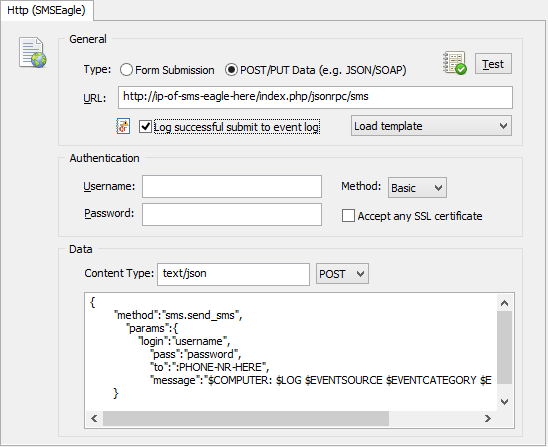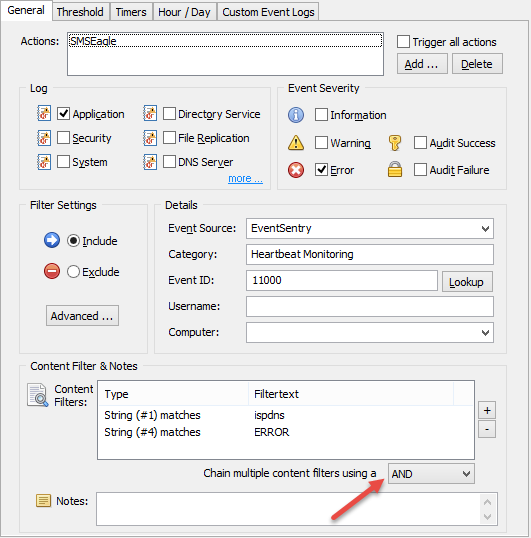Note: This article was updated in May 2017 to reflect some of the improvements SMSEagle has made to its devices, most notably support for additional wave lengths and power adapters which make the device work flawlessly in most countries in the world.
Emails are still the alert type of choice for most network administrators, but they come with a major pitfall: They either rely on your local email server, the Internet connection, or worse: both.
So if you need to get notified when your email server or Internet connection are down – and most likely you will want to get notified – text messages (aka as SMS) are a convenient way out of this monitoring conundrum.
Email to SMS, or web-based SMS services can help in some situations, but you need a different kind of beast when the Internet connection is down.
This is where hardware solutions like the SMSEagle come in. The SMSEagle is essentially a cell phone with an Ethernet jack, a web server + API, allowing you to send text messages either through its web interface or API (preferred).

The SMSEagle and similar devices usually only require three things:
- A valid SIM card
- A physical location with coverage from your provider
- An Ethernet connection to your network
With the SMSEagle in place, you no longer have to fear loss of Internet connectivity or mail server downtime – a text alert is just a few seconds away when combined with a monitoring solution like EventSentry. In fact, the SMSEagle is somewhat unique in that it actually offers its own basic network monitoring capabilities which can be used in addition to EventSentry – or to monitor the host running the EventSentry Heartbeat Monitor.
Since the SMSEagle features a web-based API, EventSentry can submit certain alerts, e.g. pertaining to Internet connectivity or the availability of a specific host and/or service, directly to the SMSEagle through its HTTP action, which will then send a SMS alert directly to your mobile device of choice.
The SMSEagle accepts mini SIM cards and works with the UMTS 800/850/900/AWS1700/1900/2100 MHz and GSM/GPRS 850/900/1800/1900 MHz wave bands and thus should work with all major cell providers. The latest models of the SMSEagle also ship with power plugs which will work in most countries, including Europe, the U.S., Australia and many others.
The setup of the device is straightforward: You first insert the SIM card, connect it to the Ethernet and power on the device. The device automatically assigns itself IP address 192.168.0.101 but can also retrieve its IP address via DHCP. More instructions & details are available in the manual.
Once you’ve setup the SMSEagle and verified that SMS messages can be sent and received, you can create an EventSentry HTTP action and point it to your SMSEagle device. The HTTP action includes a number of templates to quickly load all required fields for a specific HTTP API; simply select the SMSEagle from the drop-down and specify all the required fields such as host name and so forth. Use the test button to ensure the action is setup correctly.

Once the action is setup it can be referenced by one or more filters so that it is triggered under the right circumstances. Assuming that you are already monitoring a host outside your network (e.g. your ISPs DNS server, a public web site) to determine whether your Internet connection is available or not, you would want to look for EventSentry event 11000, which indicates when a host changes its availability status, such as:

Host ispdns (Internet) changed its PING status from OK to ERROR. The reason for the status change was: “100% packets lost”.
A filter setup for this event would look like something like this:

Here, we are looking for an application error generated by the Heartbeat Monitoring category of the EventSentry source. We’re also further restricting the filter to only alert us on status changes of the “ispdns” host when it goes off-line. Since the SMSEagle is listed as the action, this particular event (alert) will be sent to the SMSEagle action.
The insertion strings can be determined by either clicking on the “Lookup” button on the filter dialog, or by clicking on the “Preview” button when adding a content filter.
If you’re located in the Europe or the United States then the SMSEagle is a non-brainer. Otherwise, there are a few other devices out there who work similarly , and as long as they offer a HTTP-based API, integrating EventSentry with them should be easy.